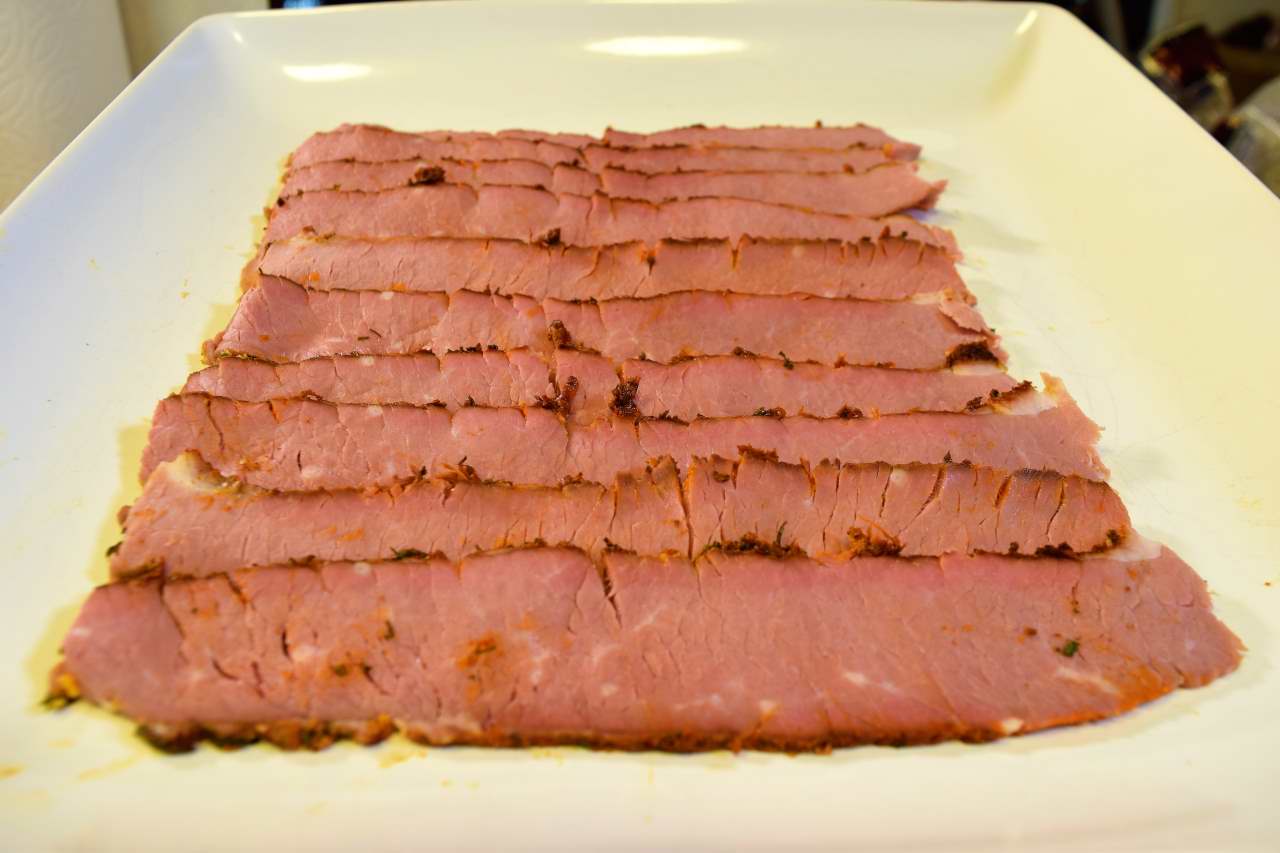Note: Some markets sell the flat and the point separately. For a fee, butchers will separate the two muscles for you. This recipe may also be applied to the point or even a whole brisket. A whole brisket will require that the seasoning mix be doubled.
Serves 6-8.
Level of difficulty, 2
Procedure:
The entire brisket is shown below. The point is the smaller, irregularly shaped piece, the flat is the rectangular shaped piece, easily distinguished.
Process the brisket flat at
129 F/54 C for 72 hours.
This is one of the longest cook times used in sous vide. The process can be accelerated if higher temperatures are used. However, the higher the temperature, the more moisture will be lost. It’s as simple as that. When the processing time has elapsed, remove the water from the vessel (I use a siphon), and fill with iced tap water (70 F/21 C).
This process may need to be repeated, especially if ice is not available. After filling, turn off the tap and track the temperature of the water in the vessel. If the temperature is stable at 70 F/21 C after half an hour, you can safely refrigerate the roast. If the temperature continues to rise, drain and fill with cold water again.This assures that the brisket is cold enough to stage into a refrigerator at 40 F/4 C.
After cooling, remove the roast from the bag and lay on a screen to harvest the Sous Jus. Refrigerate the jus. You can see that the color of the meat is still quite pink. Coat well with the rub, press it in with your fingers and let it rest for fifteen minutes to give it the opportunity to cling.
Preheat your smoker to 180 F/81 C. If you use a pellet grill this will take about 15 minutes. Smoke the brisket flat for three hours. Curb your curiosity! Opening the lid unnecessarily will affect your cooking time dramatically. Resist the urge to peek–180 F/81 C is not hot enough to burn in such a short interval.
Any smoker can be used. Follow the manufacturer’s guidelines and use an infrared thermometer to make sure you achieve this temperature as closely as possible.
Results may vary, but exposure to the gases that accompany the smoke in the barbecue tend to fix the pink color in the meat as shown. Leaving the smoker lid closed tends to encourage this process. The “well done” texture of the meat belies its color. After 72 hours, even at 129 F/54 C, there can be very little myoglobin remaining in the muscle. The smoking process will cause whatever is left to dissipate. This process is similar to the effect of curing, which also fixes the pink coloring to beef and pork, even though there is no myoglobin present.
The brisket can be thin sliced “London Broil” style, and served with your favorite steak or barbecue sauce. I recommend the one linked HERE, which we created specifically for our Sous-B-Q items. This meat is also great for sandwiches! French rolls, sliced tomatoes, sous vide processed onions and a special salad described HERE is a real crowd pleaser!
As always, we hope you enjoy this recipe and the commentary along with it. Stay tuned, with summer upon us, we will be featuring more and more warm weather dishes!







